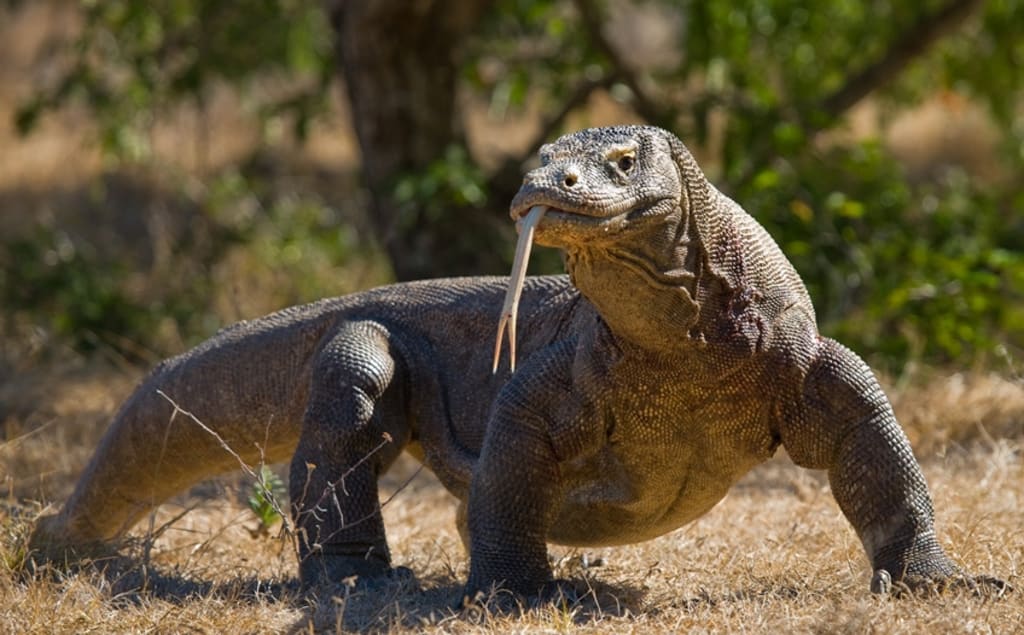The Rise of Komodo Dragons: A Tale of Ancient Giant Lizards
Komodo Dragons: Unraveling the Ancient Giants of Indonesia

Introduction
In the vast expanse of time, the islands of Indonesia were once roamed by ancient giant lizards that captivated the imagination of early explorers. Initially believed to be fire-breathing dragons, these awe-inspiring creatures were later identified as Komodo dragons, a fascinating species of monitor lizards. The history of these remarkable predators is intertwined with the mysteries of their ancestry and their ability to survive alongside ferocious mammals. Join us on a journey through time to discover the captivating story of Komodo dragons and their evolution into the awe-inspiring creatures we know today.
Unraveling the Origins of Komodo Dragons
Centuries ago, Dutch sailors returning from remote Indonesian islands shared tales of monstrous, fire-breathing dragons, fueling legends and myths. However, upon closer study, these creatures were found to be a new, undiscovered species of giant lizard. The official discovery of Komodo dragons by Western scientists didn't happen until 1910, when Lieutenant Van Steyn van Hensbroek, a Dutch colonial official, encountered and documented the existence of these magnificent reptiles on Komodo Island.
The roots of Komodo dragons trace back millions of years to the late Cretaceous period when their ancient relatives first appeared. Through the study of fossils and genetic evidence, scientists have been able to piece together the evolutionary puzzle of these extraordinary creatures.
Komodo dragons belong to the Varanidae family, commonly known as monitor lizards. This ancient lineage dates back to the time of non-avian dinosaurs, approximately 70 to 80 million years ago. Fossils of tiny monitor lizards have been unearthed in Mongolia, offering valuable insights into their early existence. Larger species, like the Paleocenewa, once coexisted with giant dinosaurs like Tyrannosaurus rex in North Dakota's Hell Creek Formation.
The exact origin of true Varanids has been elusive, but recent discoveries suggest an Asian origin, with their ancestors spreading across various continents before eventually reaching Australasia.
Australasia, encompassing the Indonesian islands and Australia, became a thriving region for monitor lizards. Fossils found in Australia dating back millions of years reveal that these large lizards lived there long before their discovery on Flores Island. In this region, evidence of various giant monitor species, including the gigantic Megalania, the largest known land lizard, has been uncovered.
During this time, Australasia was also home to ferocious marsupials, with which the giant monitor lizards coexisted. This coexistence showcases the Komodo dragons' exceptional adaptive abilities, as they successfully navigated through the challenges posed by other formidable predators.
Initially, it was speculated that Komodo dragons' gigantism was a result of being isolated on Flores Island. However, further research has shown that their remains were found on other islands and northern Australia as well. Their body size has remained relatively consistent over time, and it is now clear that their large stature is not limited to island ecology.
Komodo dragons possess unique traits that make them fearsome apex predators, capable of taking down animals as large as water buffaloes. Their saliva is teeming with bacteria that can cause lethal infections in their prey, and their acute sense of smell allows them to detect carrion from great distances, making them skilled scavengers as well.
Throughout history, monitor lizards have displayed remarkable adaptability and resilience, allowing them to compete successfully with mammals for resources. One key advantage is their efficient three-chambered hearts, which enable them to hunt actively and exhibit stamina comparable to similarly sized mammals. This adaptability has made them successful predators across different continents, and some species have even become invasive in new environments.
Conclusion
Komodo dragons, once mistaken for mythical fire-breathing dragons, have proven to be an extraordinary species of monitor lizards with deep roots in the ancient past. Their large stature and formidable predatory skills have allowed them to survive alongside ferocious mammals, becoming a relic from a time when giant lizards dominated Australasia.
Understanding the evolution and unique traits of Komodo dragons sheds light on the fascinating world of these prehistoric giants. As we continue to explore and preserve the natural wonders of our planet, let us cherish and protect these incredible creatures, ensuring that they continue to thrive in the wild for generations to come. Their story serves as a reminder of the incredible diversity and resilience of life on Earth, and the importance of safeguarding our planet's biodiversity.
About the Creator
Rohit Singh
Software developer, part-time content creator, and tech enthusiast.
Unleashing creativity and embracing tech. Join me on this thrilling journey! 🚀






Comments
There are no comments for this story
Be the first to respond and start the conversation.